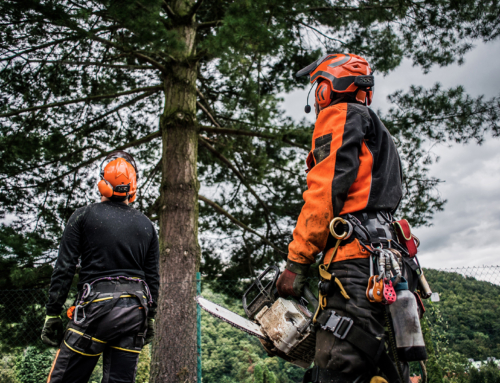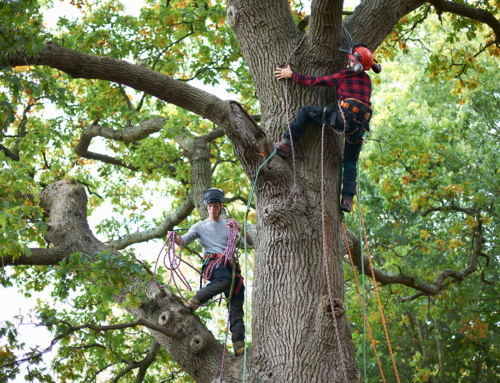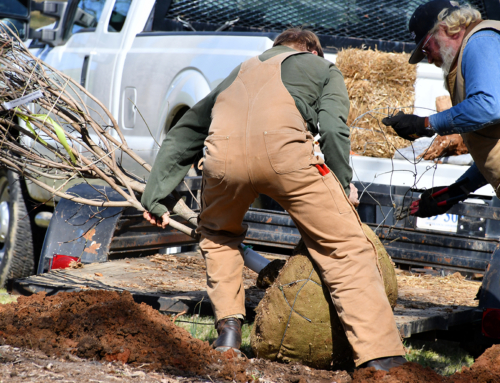Welcome to the Skyline Arborist Site Plan Presentation!
In this article, we will provide you with an exciting visual journey through maps, visuals, and photographs related to arboriculture. With over [insert number of years] of expertise, Skyline Arborist is a leading authority in the field, renowned for its comprehensive tree care services.
Through this presentation, we aim to showcase the meticulous planning and strategic approach that underpins our work. From aerial maps illustrating tree distribution and density to stunning visuals displaying the before and after effects of our interventions, you will witness how our team transforms landscapes while preserving the health and beauty of trees.
We understand that visual aids not only add depth to information but also captivate audiences. Therefore, our presentation is designed to engage and inform, striking a balance between aesthetics and educational content. Whether you are an arborist, a homeowner, or simply interested in environmental conservation, this presentation promises to be both informative and visually spectacular.
Importance of Site Plan Presentations for Arborists
As arborists, we play a crucial role in maintaining the health and longevity of trees within various landscapes, from residential properties to commercial developments. Our work is not just about trimming branches or removing diseased trees; it involves a comprehensive understanding of the ecosystem, the unique characteristics of each tree, and the overall impact of our interventions on the environment.
Site plan presentations are an essential tool in our arsenal, allowing us to communicate our vision, strategies, and the expected outcomes of our work to clients, stakeholders, and regulatory bodies. These presentations serve as a visual blueprint, guiding decision-makers and ensuring that our recommendations are aligned with the project’s objectives and the client’s needs.
By leveraging the power of maps, visuals, and photographs, we can effectively convey the complexities of arboriculture and demonstrate the value of our services. This not only helps to secure project approvals but also builds trust and confidence in our abilities, ultimately leading to long-term partnerships and referrals.
Understanding the Components of a Site Plan Presentation
A comprehensive site plan presentation for arborists typically includes a range of components that work together to create a cohesive and informative visual narrative. Let’s dive into the key elements that make up a successful site plan presentation:
Maps
Aerial maps are a fundamental component of any site plan presentation, as they provide a bird’s-eye view of the project area. These maps can illustrate the distribution and density of trees, highlighting areas of concern, high-value specimens, and potential challenges that need to be addressed. By incorporating layers such as property boundaries, topography, and existing infrastructure, we can paint a detailed picture of the site’s existing conditions and potential opportunities for intervention.
Visuals
In addition to maps, visuals play a crucial role in site plan presentations. These can include computer-generated renderings, 3D models, and before-and-after images that demonstrate the anticipated outcomes of our proposed interventions. These visuals not only captivate the audience but also convey complex information in a clear and concise manner, making it easier for decision-makers to understand the potential impact of our recommendations.
Photographs
Photographs are an invaluable tool in site plan presentations, as they provide a tangible representation of the existing conditions on the site. From close-up shots of individual trees to panoramic views of the landscape, these images can help to contextualize the information presented in the maps and visuals. By showcasing the current state of the site, we can build a stronger case for our proposed actions and highlight the need for our expertise.
Creating Effective Maps for Site Plan Presentations
Crafting effective maps for site plan presentations is a critical skill for arborists. These maps serve as the foundation for our visual storytelling, and their quality and clarity can make or break the impact of our presentation. Here are some best practices for creating impactful maps:
Accurate Data Collection
The first step in creating effective maps is to ensure that the data we collect on the site is accurate and up-to-date. This includes precise measurements of tree locations, species, size, and condition, as well as any relevant infrastructure or landscape features. By investing time in thorough data collection, we can ensure that our maps accurately reflect the true state of the site.
Intuitive Design
The design of our maps should be intuitive and easy to understand. This means using clear and consistent labeling, color-coding to highlight key features, and incorporating legends that explain the various elements depicted. By making our maps visually appealing and easy to navigate, we can ensure that our audience can quickly grasp the information we’re presenting.
Layered Approach
Site plan presentations often require multiple maps to convey different types of information. By adopting a layered approach, we can present this information in a logical and organized manner. For example, we might start with a base map showing the overall site layout, then add layers for tree locations, species distributions, and proposed interventions. This allows us to gradually build up the complexity of the information while keeping the presentation clear and easy to follow.
Incorporating Visuals and Photographs in Site Plan Presentations
While maps form the backbone of our site plan presentations, the inclusion of visuals and photographs can elevate the impact of our work and captivate our audience. Here’s how we can effectively incorporate these elements:
Visuals for Proposed Interventions
Computer-generated renderings and 3D models can be incredibly powerful tools for showcasing the potential outcomes of our proposed interventions. By creating detailed visualizations of the site before and after our work, we can help clients and stakeholders envision the transformation and understand the value of our services. These visuals can include everything from the placement of new trees to the integration of landscape features and infrastructure.
Photographs for Existing Conditions
Photographs play a crucial role in providing a tangible representation of the site’s existing conditions. From close-up shots of individual trees to panoramic views of the landscape, these images can help to contextualize the information presented in the maps and visuals. By showcasing the current state of the site, we can build a stronger case for our proposed actions and highlight the need for our expertise.
Storytelling with Visuals
The most effective site plan presentations don’t just present data; they tell a story. By carefully selecting and sequencing our visuals and photographs, we can guide our audience through the narrative of our work, from the initial assessment of the site to the anticipated outcomes of our interventions. This storytelling approach not only engages the audience but also helps to convey the depth and complexity of our work in a compelling and memorable way.
Best Practices for Presenting Site Plans to Clients
Presenting site plans to clients is a critical part of our work as arborists, and it requires a delicate balance of technical expertise and effective communication. Here are some best practices to ensure that our site plan presentations are both informative and impactful:
Tailored Approach
Every client is unique, with their own priorities, concerns, and levels of technical understanding. By tailoring our presentations to the specific needs and preferences of our clients, we can ensure that the information we provide is relevant, accessible, and engaging. This might involve adjusting the level of technical detail, emphasizing certain aspects of the site plan, or using language and visuals that resonate with the client’s background and interests.
Storytelling Narrative
As mentioned earlier, the most effective site plan presentations tell a story. By guiding our clients through the narrative of our work, from the initial assessment to the proposed interventions and their anticipated outcomes, we can help them understand the reasoning behind our recommendations and build trust in our expertise. This storytelling approach not only makes the presentation more engaging but also helps to ensure that the key takeaways are clearly communicated.
Interactive Engagement
Site plan presentations shouldn’t be one-way monologues; they should be interactive experiences that encourage client engagement and feedback. By incorporating opportunities for questions, discussions, and even hands-on exploration of the site plan, we can foster a collaborative environment and ensure that our clients feel heard and understood. This not only strengthens the client-arborist relationship but also helps to refine our recommendations and ensure that they align with the client’s needs.
Tools and Software for Creating Professional Site Plan Presentations
In today’s digital landscape, there are a wide range of tools and software that can help arborists create professional and visually compelling site plan presentations. Here are some of the most popular and effective options:
Geographic Information Systems (GIS)
Geographic Information Systems (GIS) software, such as ArcGIS or QGIS, are powerful tools for creating detailed and accurate maps for site plan presentations. These platforms allow us to collect, analyze, and visualize spatial data, including tree locations, species, and other landscape features. By integrating GIS into our workflow, we can generate high-quality maps that serve as the foundation for our presentations.
Computer-Aided Design (CAD)
Computer-Aided Design (CAD) software, like AutoCAD or SketchUp, are invaluable for creating detailed renderings and 3D models of proposed interventions. These tools enable us to visualize the anticipated outcomes of our work, allowing clients and stakeholders to better understand the potential impact of our recommendations. By incorporating CAD-generated visuals into our site plan presentations, we can enhance the overall impact and clarity of our work.
Presentation Software
Presentation software, such as Microsoft PowerPoint or Google Slides, provides a versatile platform for compiling and organizing our site plan presentations. These tools allow us to seamlessly integrate maps, visuals, and photographs into a cohesive and visually appealing format. Additionally, many presentation software offer features like animation, transitions, and interactive elements that can further engage our audience and highlight the key points of our work.
Examples of Successful Site Plan Presentations
To illustrate the power and effectiveness of site plan presentations, let’s explore a few real-world examples of successful projects undertaken by Skyline Arborist:
Residential Property Renovation
In a recent residential property renovation project, Skyline Arborist was tasked with developing a comprehensive site plan to preserve the health and beauty of the existing trees while integrating new landscape features. Our presentation began with a detailed aerial map that highlighted the distribution and density of the trees, along with any potential conflicts with the proposed renovations. We then incorporated before-and-after renderings to showcase how the new landscape design would complement the existing trees, creating a harmonious and visually appealing outdoor space. By clearly communicating our strategy and the anticipated outcomes, we were able to secure the client’s trust and approval, leading to a successful project completion.
Commercial Development Plan
For a large-scale commercial development project, Skyline Arborist was called upon to create a site plan that balanced the needs of the development with the preservation of the site’s natural assets. Our presentation started with a series of maps that illustrated the existing tree distribution, species diversity, and potential areas of concern. We then leveraged 3D modeling software to generate visuals that demonstrated how the proposed buildings, parking lots, and landscaping would be integrated with the existing trees. By highlighting the environmental and aesthetic benefits of our recommendations, we were able to convince the client and local authorities to adopt a more tree-friendly approach to the development, ensuring the long-term sustainability of the site.
Urban Forestry Plan
In a comprehensive urban forestry plan, Skyline Arborist worked closely with the local municipality to develop a strategic site plan for managing and enhancing the city’s tree canopy. Our presentation featured a combination of GIS-generated maps, which provided a detailed overview of the city’s existing tree inventory, and photographic evidence of the current conditions. We then incorporated visual simulations to demonstrate the potential impact of our proposed interventions, such as strategic tree planting, targeted pruning, and disease management. By presenting a clear and compelling case for the value of urban forestry, we were able to secure the necessary funding and support from the local government to implement our recommendations, ultimately improving the environmental and aesthetic quality of the city.
How Site Plan Presentations Benefit Arborists and Their Clients
The power of site plan presentations extends far beyond the confines of a single project or client. By mastering the art of visual storytelling, arborists like Skyline Arborist can unlock a multitude of benefits for both themselves and their clients:
Increased Credibility and Professionalism
Delivering high-quality site plan presentations demonstrates our expertise, attention to detail, and commitment to delivering exceptional results. This, in turn, enhances our credibility and professionalism in the eyes of our clients, making us the preferred choice for future projects and referrals.
Improved Client Engagement and Understanding
By using visuals and interactive elements in our site plan presentations, we can effectively communicate complex information and foster a deeper understanding of our recommendations among our clients. This not only leads to more informed decision-making but also strengthens the client-arborist relationship, built on trust and mutual respect.
Increased Project Success and Repeat Business
When our site plan presentations clearly convey the value and anticipated outcomes of our work, clients are more likely to approve our recommendations and invest in our services. This, in turn, leads to successful project completions and a higher likelihood of repeat business, as satisfied clients continue to rely on our expertise for their ongoing tree care needs.
Expanded Reach and Reputation
As we continue to showcase our expertise through exceptional site plan presentations, our reputation within the industry and local community can grow exponentially. This can open the door to new opportunities, such as speaking engagements, industry awards, and collaborations with other professionals in the field of arboriculture.
Conclusion and Next Steps
In conclusion, the Skyline Arborist Site Plan Presentation is a testament to the power of visual storytelling in the world of arboriculture. By leveraging the power of maps, visuals, and photographs, we have demonstrated our commitment to delivering comprehensive, strategic, and visually compelling solutions for our clients.
As you’ve seen throughout this presentation, the key to successful site plan presentations lies in our ability to seamlessly integrate data, technology, and creative vision. From meticulous data collection to the crafting of captivating visuals, every aspect of our work is carefully considered to ensure that our clients and stakeholders can fully grasp the complexities and value of our services.
Moving forward, we encourage you to explore the world of site plan presentations and discover how this powerful tool can transform your own arborist practice. Whether you’re a seasoned professional or just starting out, mastering the art of visual communication can open up a world of possibilities, from securing high-profile projects to building lasting relationships with your clients.
So, take the first step and begin crafting your own site plan presentations today. With the right tools, techniques, and a commitment to excellence, you too can become a master storyteller in the realm of arboriculture, captivating audiences and driving meaningful change in your community. The future of our urban forests is in our hands, and site plan presentations are the key to unlocking its full potential.
Skyline Tree Service is a locally owned and operated tree service company based out of the greater Mammoth Lakes, June Lake, and Bishop CA area. Please contact us for an appointment.


